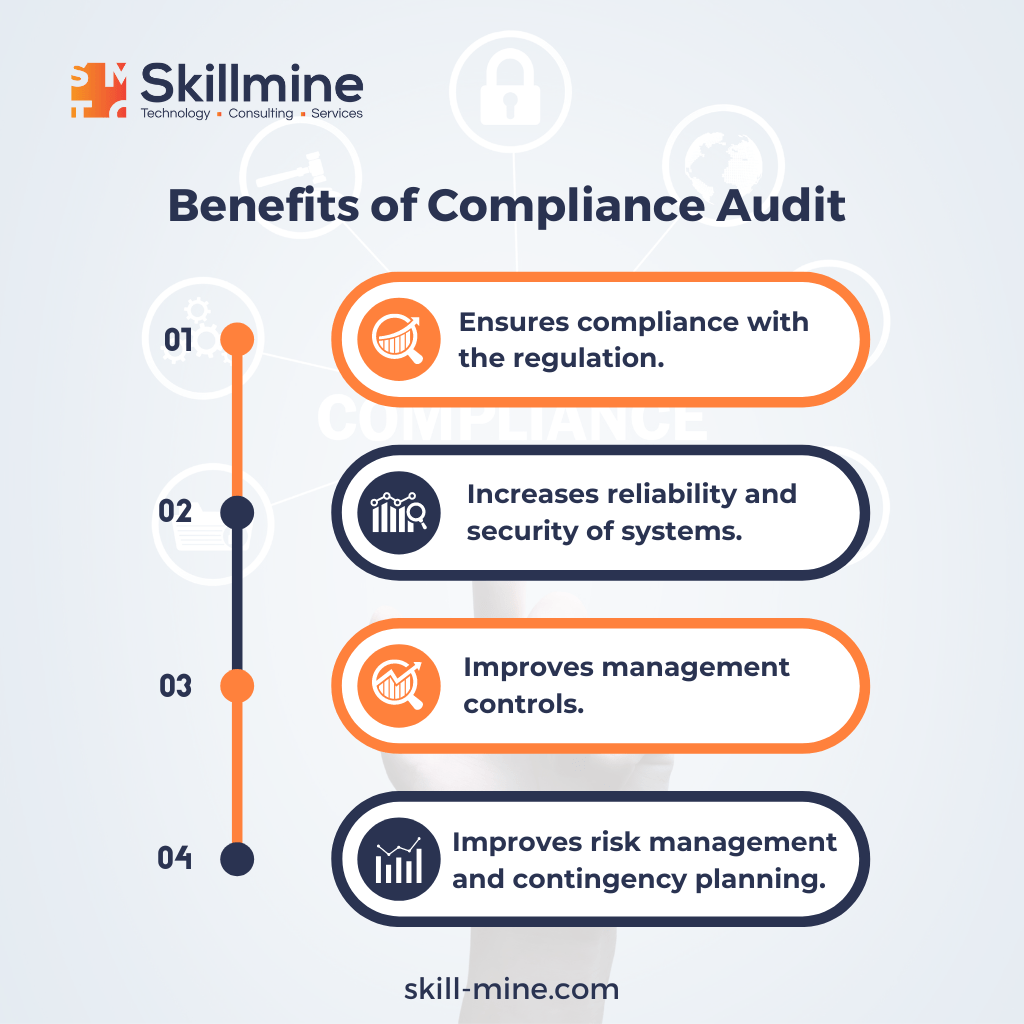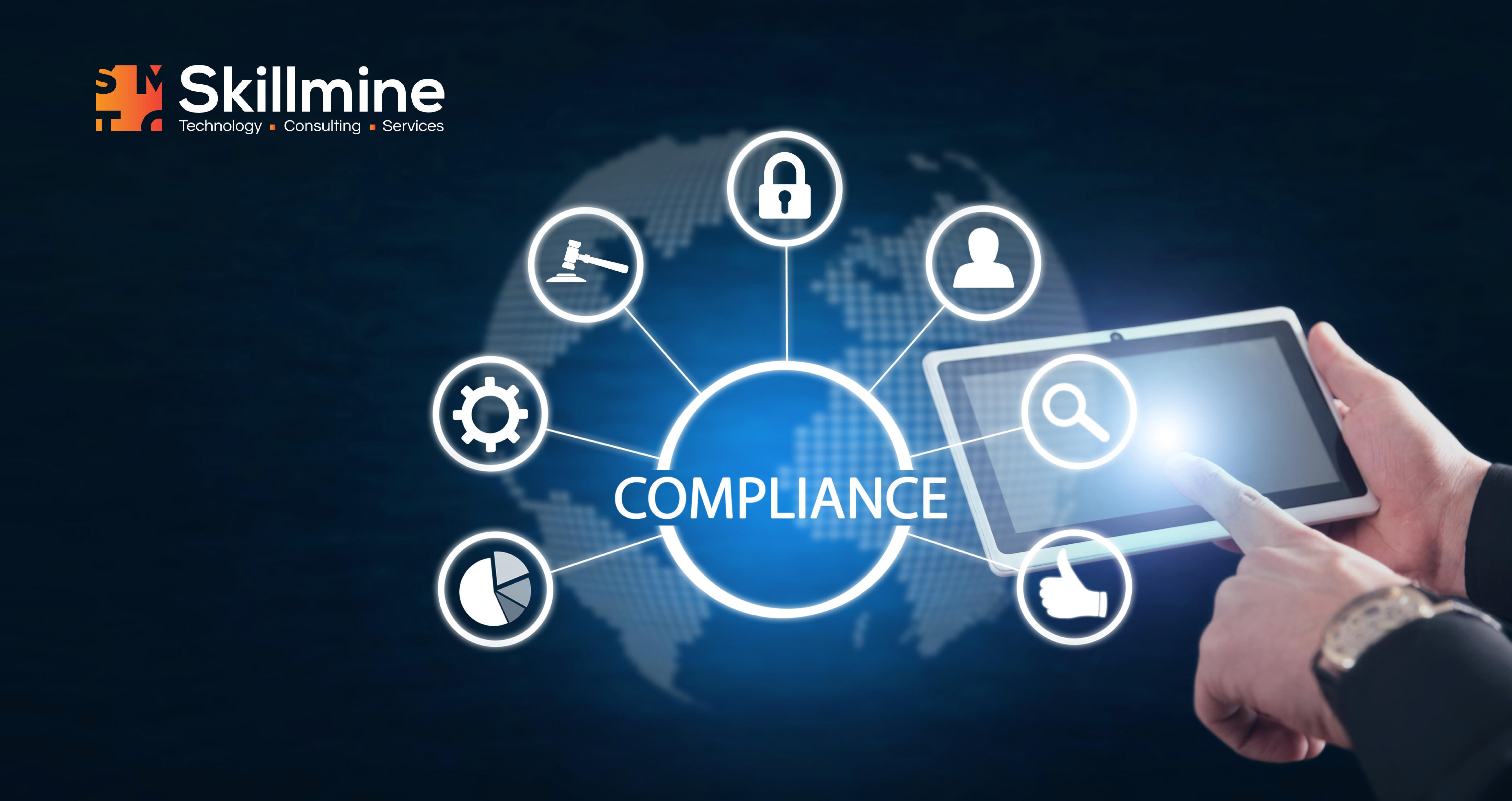An IT compliance audit can be defined as an evaluation that businesses undergo to determine their adherence to regulatory standards applicable to their industry and geographical location. This assessment involves examining the organization’s compliance protocols, security measures, user access controls, and risk management procedures, as well as its policies, procedures, and operational processes.
Importance of compliance audit
The fundamental objective of conducting a compliance audit is to ascertain the appropriateness of a company’s business conduct. If the audit’s findings indicate ineffectiveness in the company’s policies or processes, the auditor might communicate these results to the company’s leadership or relevant government authorities. Performing a compliance audit also offers several advantages for organizations and their workforce:
Identifying avenues for enhancement: Through a compliance audit, outdated systems or processes can come to light. In such instances, auditors might propose recommendations for implementing more efficient alternatives.
Augmenting safety protocols: Numerous regulations safeguard employees, consumers, and the environment. By utilizing compliance audits, organizations can evaluate their adherence to these stipulations, thus ensuring secure working conditions by adhering to established guidelines.
Mitigating legal risks: Routine compliance audits enable companies to curtail legal risks by verifying their alignment with governmental regulations. This proactive approach helps prevent potential fines and penalties while ensuring continuous compliance.

Preparing for IT Compliance Audit: Step-by-Step Guide
Enhancing audit outcomes, regardless of your industry or location, involves adhering to fundamental procedures. Here’s a comprehensive guide to help you get ready for a compliance audit ( IT Compliance Assessment And Management )
Assemble Essential Documentation
Initiate the process by meticulously documenting the organization’s procedures. Outline the methods that employees employ to adhere to governmental regulations. Communicate with the external auditor to determine if specific documents such as financial statements or personnel records are necessary for review. This ensures that you possess all required documents. Proactively gather the materials that the organization needs to share with the auditor.
Evaluate Internal Processes
Internally scrutinize the organization’s IT processes and systems to pinpoint potential areas for enhancement. Identify the pivotal focal points that compliance auditors generally concentrate on. For instance, if the organization is engaged in cybersecurity, auditors might assess the IT systems for compliance with industry standards. Grasping the auditors’ priorities enables you to concentrate on crucial business aspects during the review.
Establish a Robust Auditing Trail
Demonstrate adherence to government regulations by establishing a coherent auditing trail. Systematically record the core processes of the company, either manually or electronically. This may encompass maintaining records of security protocols, hiring protocols, and tax-related data.
Educate Team Members
Equip your team with the requisite knowledge by briefing them on essential procedures and policies in preparation for the impending compliance audit. This empowers them with an understanding of the necessary steps to uphold vital governmental regulations. Ensure that your onboarding materials align with government regulations and contemplate organizing refresher courses for employees to reinforce critical procedures.
Stay Abreast of Updated Regulations
Stay current with industry regulations through subscriptions to industry newsletters. Participation in networking events and conferences can also keep you informed about industry modifications. Routinely reviewing the organization’s policies and procedures guarantees ongoing compliance.
Conclusion
While they might appear laborious, audits present the chance to comprehend your organization and rectify issues before they escalate into major challenges. The steps listed here enable your organization to thoroughly prepare for an audit. There are several IT compliance software tools that help you simplify the audit process. know what to consider when choosing an IT compliance tool. Skillmine’s home-grown product COMPLYment is an IT compliance management software solution that helps you streamline your audit process and delivery.
Looking for expert technology consulting services? Contact us today.





